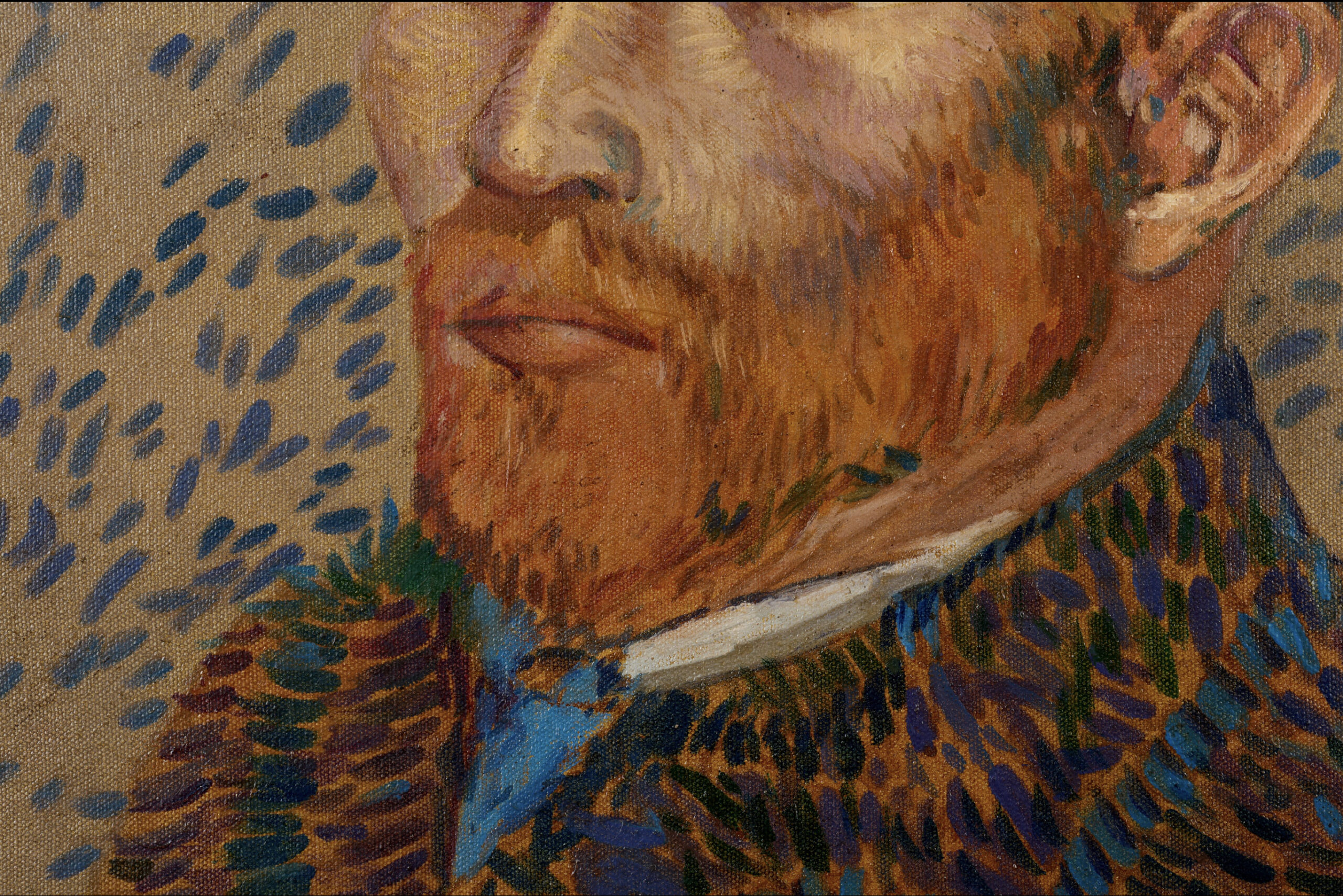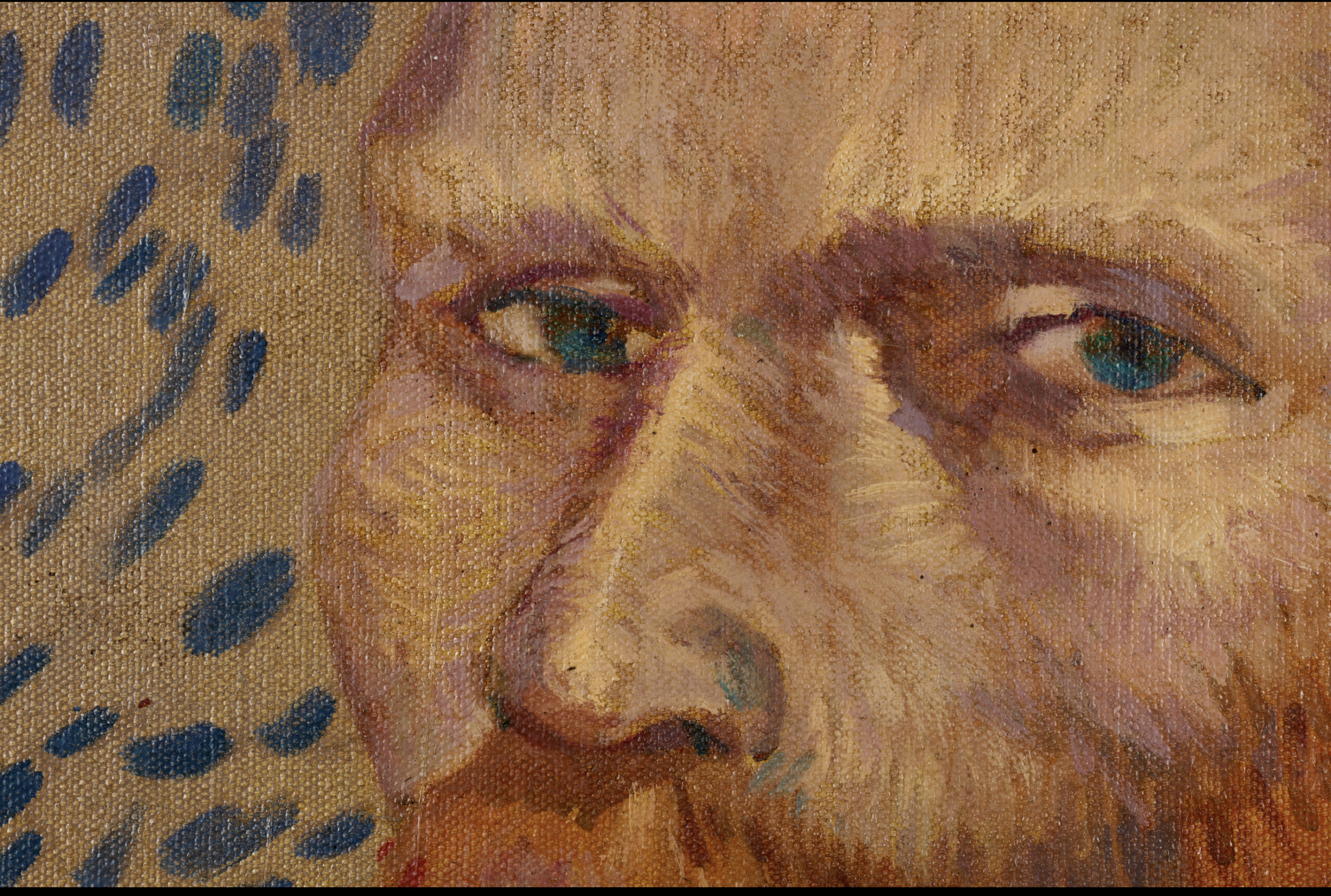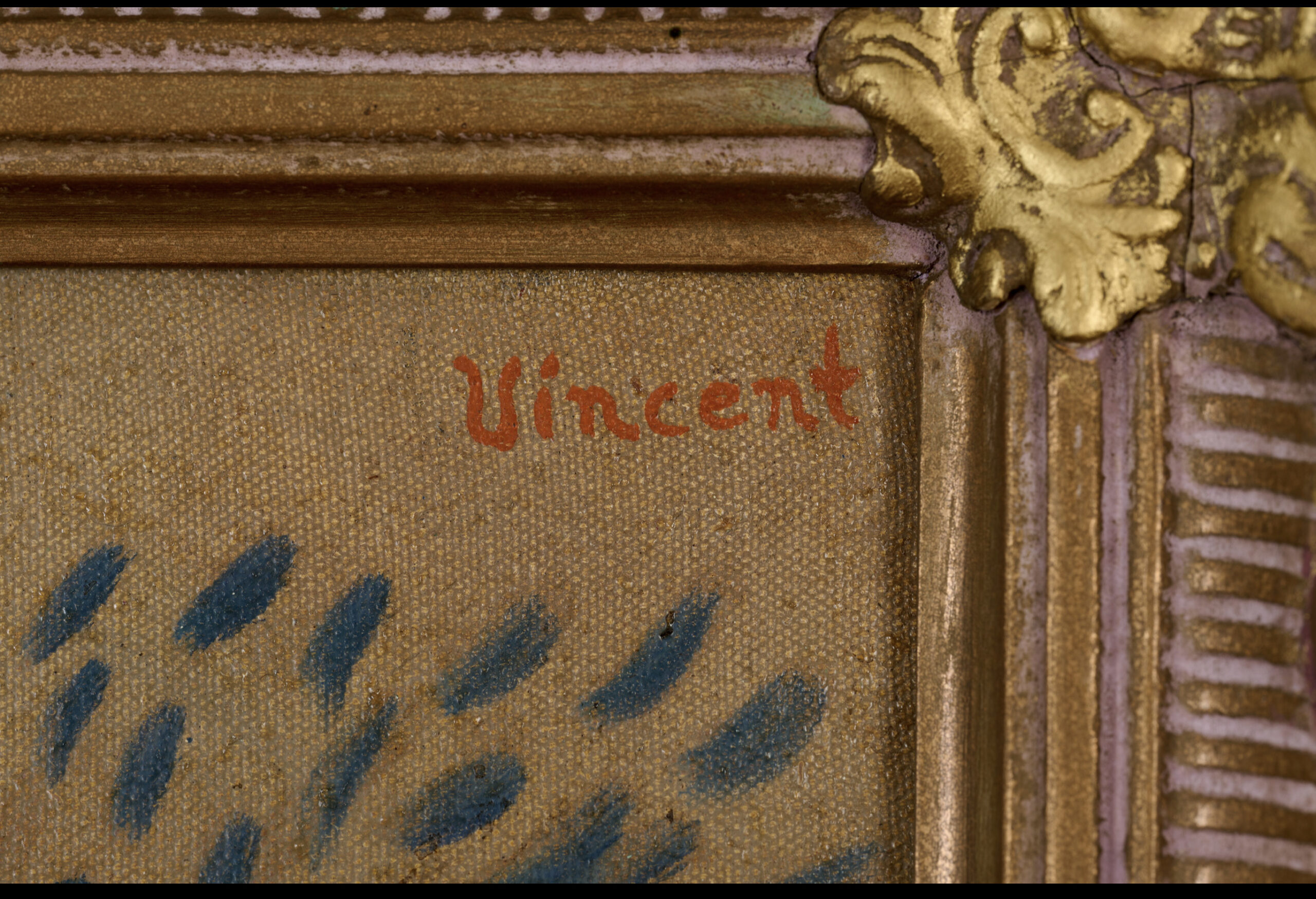
Van Gogh “Self-portrait”
Oil on canvas - 40cm / 50cm
Vincent Willem van Gogh Dutch: 30 March 1853 – 29 July 1890) was a Dutch Post-Impressionist painter who is among the most famous and influential figures in the history of Western art. Van Gogh's artistic activity was brief and prolific, and he was not successful or well-known during his lifetime. In a decade, Van Gogh created about 2,100 artworks, including about 860 oil paintings, most created in the last two years of his life. His landscapes, still lifes, portraits and self-portraits are characterised by bold colours, energetic and expressive brushwork. Van Gogh's many letters to his brother, art dealer Theo van Gogh, are a primary source of information about his life, character, and artistic aims, and chronicle his personal and financial challenges. Van Gogh struggled with severe depression and committed suicide at age 37.
Born into an upper-middle class family, Van Gogh drew as a child and was serious, quiet, and thoughtful. As a young man, he worked as an art dealer, often traveling, but became depressed after he was transferred to London. He turned to religion and spent time as a Protestant missionary in predominantly Roman Catholic southern Belgium. He drifted in ill health and solitude before studying painting in 1881, having moved back home with his parents. Later, Van Gogh's younger brother Theo supported him financially.
Van Gogh's early works consisted of mostly still lifes and depictions of peasant labourers,. In 1886, he moved to Paris, where he met members of the artistic avant-garde, including Émile Bernard and Paul Gauguin, who were seeking new paths beyond Impressionism. Frustrated in Paris and inspired by a growing spirit of artistic change and collaboration, Van Gogh moved to Arles in south of France in February 1888 with the goal of establishing an artistic retreat and commune. Once there, Van Gogh's art changed. His paintings grew brighter and he turned his attention to the natural world, depicting local olive groves, wheat fields and sunflowers. Van Gogh invited Gauguin to join him in Arles and eagerly anticipated Gauguin's arrival in the fall of 1888.
Van Gogh suffered from psychotic episodes and delusions and though he worried about his mental stability, he often neglected his physical health, did not eat properly and drank heavily. His friendship with Gauguin ended after a confrontation with a razor when, in a rage, he severed part of his own left ear. He spent time in psychiatric hospitals, including a period at Saint-Rémy. After he discharged himself and moved to the Auberge Ravoux in Auvers-sur-Oise near Paris, he came under the care of the homeopathic doctor Paul Gachet. His depression persisted, and on 27 July 1890, Van Gogh is believed to have shot himself in the chest with a revolver, dying from his injuries two days later.
Van Gogh's art gained critical recognition after his death and his life story captured public imagination as an emblem of misunderstood genius. Van Gogh's bold use of color, expressive line and thick application of paint inspired avant garde artistic groups like the Fauves and German Expressionists in the early 20th century. Van Gogh's work gained widespread critical and commercial success in the following decades, and he has become a lasting icon of the romantic ideal of the tortured artist. Today, Van Gogh's works are among the world's most expensive paintings to have ever sold, and his legacy is honoured by a museum in his name, the Van Gogh Museum in Amsterdam, which holds the world's largest collection of his paintings and drawings.



